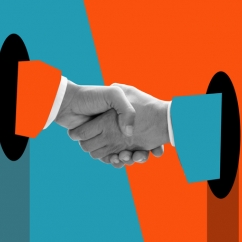Sales Strategy
Proven Strategies for Quickly and Effectively Closing Retail Sales June 19, 2024 (0 comments)

Dallas, TX—In retail, closing sales swiftly is crucial to make the most out of people's in-store visits. With numerous choices and limited attention spans, retailers must employ effective strategies to encourage quick purchases.
[Image via istockphoto.com]
As highlighted in an article by RetailNext, here are eight proven techniques to close retail sales quickly, illustrated with real-life examples from major brands.
Create a Sense of Urgency
Creating urgency spurs customers into making quick purchasing decisions. Limited-time offers, flash sales, and exclusive deals highlight a product's scarcity or time-sensitive nature, prompting faster actions to avoid missing out.
Example: Amazon's Prime Day offers thousands of deals for 48 hours, pressuring customers to purchase before discounts disappear. Countdown timers, low-stock alerts, and phrases like "only a few left" amplify this urgency, boosting sales.
Offer Personalized Recommendations
Personalized recommendations prompt quicker purchasing decisions. By using customer data, retailers can tailor suggestions to individual preferences and past behaviors, making customers feel understood and valued.
Example: E-retailers use algorithms to recommend products based on browsing history and previous purchases. Spotify curates personalized playlists based on listening habits, encouraging users to explore and engage more. Tailored recommendations streamline decision-making, making it easier for customers to find what they want and complete their purchases.
Simplify the Checkout Process
A simplified checkout process reduces cart abandonment and encourages quick purchases. Streamlining involves minimizing steps, providing clear instructions, and ensuring a user-friendly interface.
Example: Apple Pay and Google Pay enable customers to make purchases with a few taps, saving time and enhancing the shopping experience by eliminating the need for physical cards at checkout.
Leverage Social Proof
Social proof influences customer behavior and motivates quick purchasing decisions by leveraging others' experiences to establish trust and validate choices. Customer testimonials, reviews, and real-time demonstrations of product popularity can achieve this.
Example: Sephora showcases top-seller products and high-rated items in-store, providing visual cues that others have purchased and enjoyed similar items. Featuring live sales counters showing recent purchases can create a buzz and prompt quicker decisions.
Ensure Effective Visual Merchandising
Effective visual merchandising influences customer behavior by creating an inviting and engaging shopping environment. Strategic store layouts, appealing displays, and sensory engagement attract customers and guide them toward purchases.
Example: IKEA designs stores to lead customers through different room setups, helping them envision products in realistic settings. Lush uses appealing scents to draw customers in, while tactile experiences allow them to touch and try products, enriching the shopping journey.
Provide Excellent Customer Service
Excellent customer service builds loyalty and encourages quick purchasing decisions. Knowledgeable and approachable staff enhance the shopping experience by providing personalized assistance and expert advice.
Example: Nordstrom is renowned for outstanding customer service, with staff offering styling tips and immediate help. Apple's retail stores employ trained staff who provide product demonstrations, technical support, and personalized recommendations, ensuring customers feel valued and supported.
Offer Flexible Payment Options
Flexible payment options boost customer confidence in making purchases. Offering a range of methods caters to diverse financial situations, making it easier for customers to commit to buying.
Example: Retailers partnering with BNPL services allow customers to split payments into manageable installments. Home Depot offers project loan cards and financing options, enabling customers to undertake larger projects without upfront payment strain.
Rely on In-Store Technology
Using in-store technology enhances the shopping experience and boosts customer confidence in purchasing decisions. Interactive kiosks, tablets, and mobile apps provide easy access to product information, reviews, and availability.
Example: In-store analytics optimize staff scheduling, test store layouts, and ensure shoppers' safety, contributing to a positive store sentiment and empowering staff and customers.
Read the original article in RetailNext.






